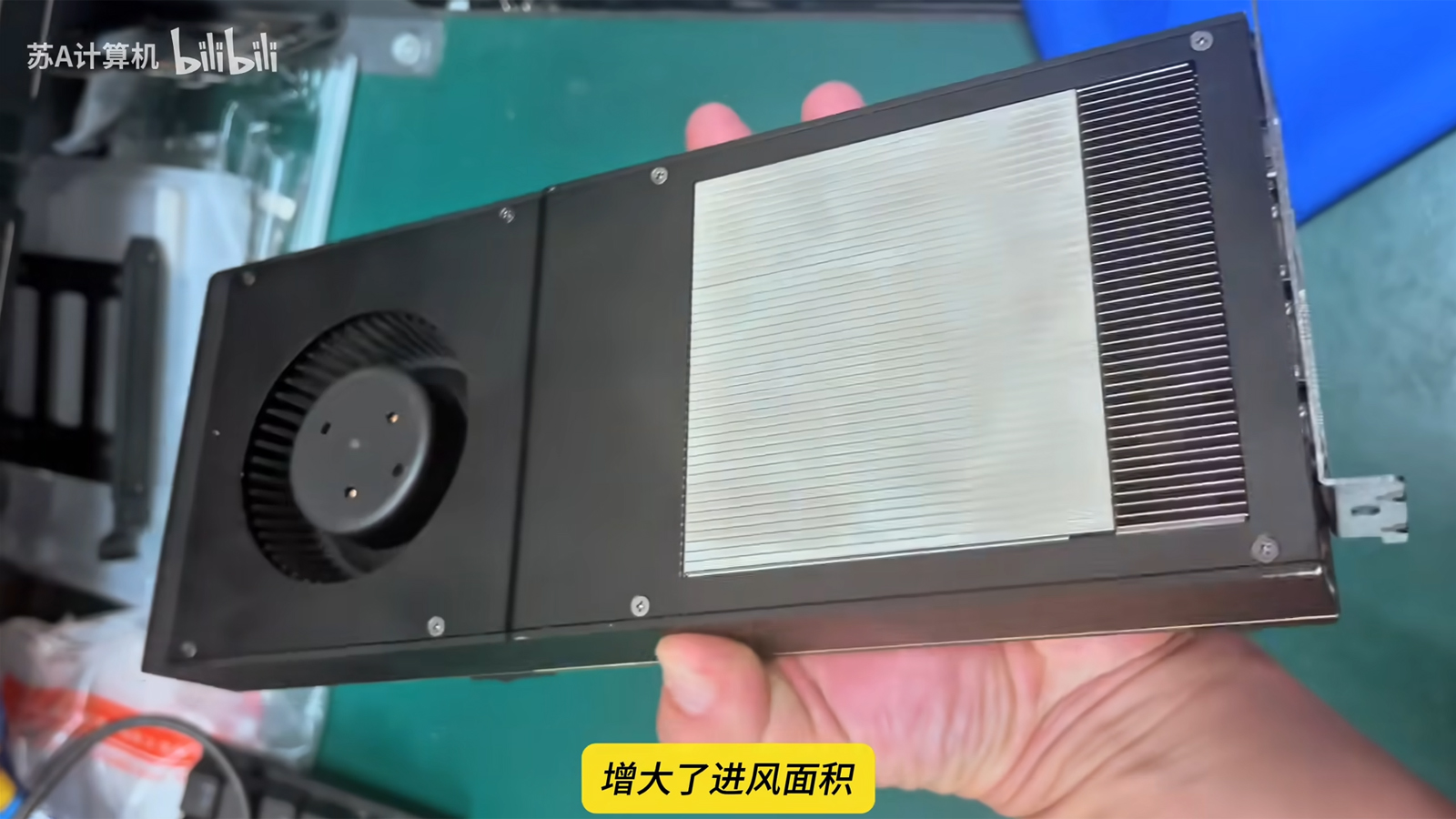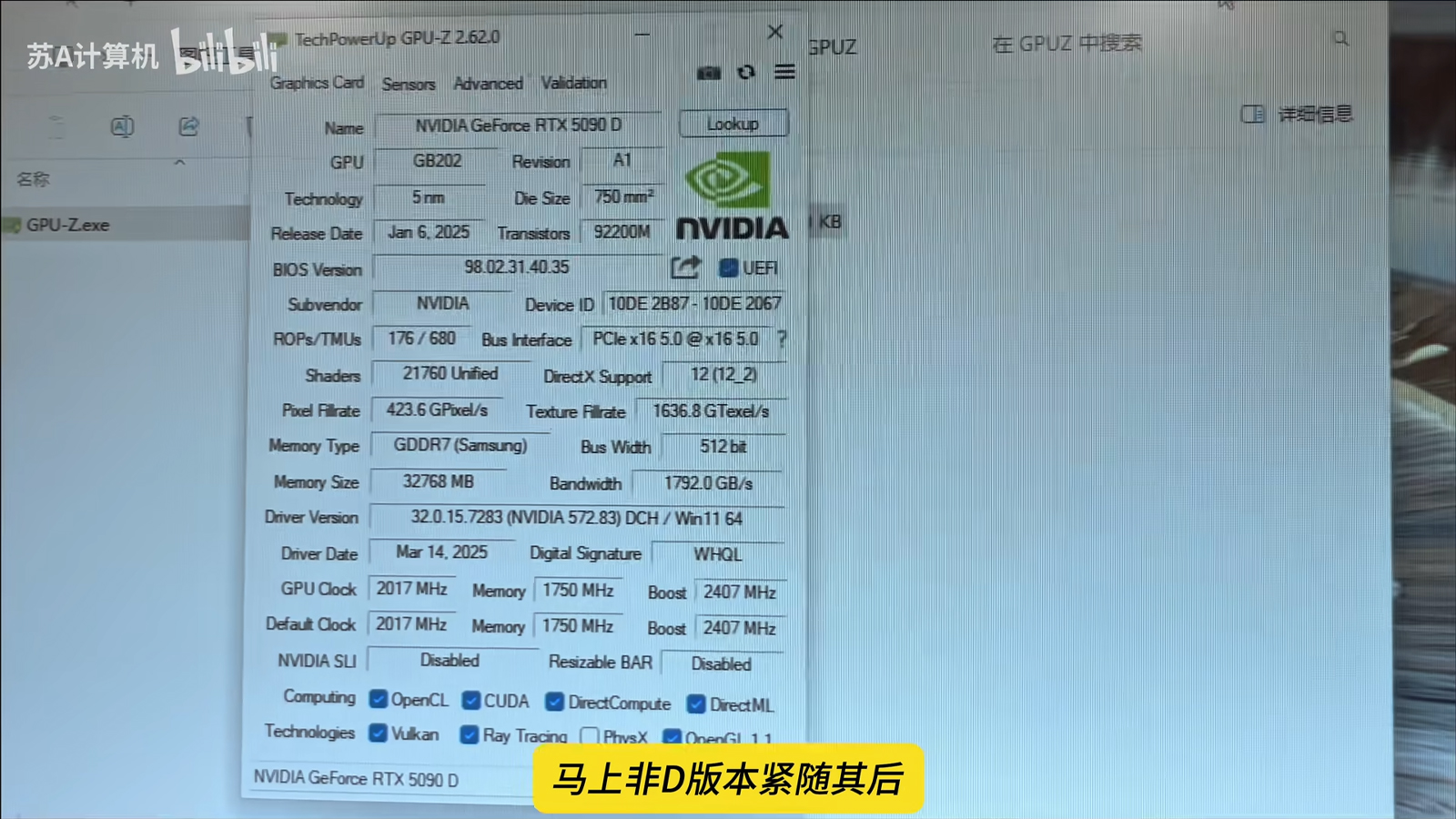Blower-style RTX 5090D leaked on Bilibili — two-slot GPU design built for AI rigs
China will soon see RTX 5090Ds meant for professional workstations.

Footage of an RTX 5090D has been making the rounds on the Chinese video platform Bilibili, showing a two-slot design and a rear-mounted power connector. Popular hardware leaker Uniko’s Hardware shared the post on X (formerly Twitter), with the video creator comparing it to a blower-style RTX 4090D from Asus.
The video shared by Su-A computer on Bilibili also showed the card’s GPU-Z reading, proving that it uses the same GB202 chip with 32 GB of GDDR7 VRAM. It’s also equipped with PCIe 5.0 x16, ensuring the fastest possible transfer rates.

Blower-style GPUs are often preferred in cases with limited internal space and for professional systems that use multiple graphics cards. These often have a single centrifugal fan that intakes cool air from inside the case and pushes it through the entire length of the GPU before expelling the hot air directly outside. This ensures that the heat generated by the GPU will not be recycled into the system, helping it run at a lower temperature.
However, these graphics cards are unlikely to be used for gaming, as they’re typically noisier and less efficient at dissipating heat because their circuit boards are enclosed. Instead, they’re more likely designed for professional applications that use multiple GPUs, like AI training.
You can see this with the rear placement of their 16-pin power connector and their smaller two-slot form factor (versus the larger 3.5 slots or larger that most third-party RTX 5090 GPUs take up), which makes installing and wiring many GPUs far more convenient.
The Chinese market will likely be looking forward to the appearance of the blower-style 5090D. This would allow smaller firms to gain access to relatively capable hardware without dropping huge amounts on the most advanced GPUs they can get from the black market, or the China-specific Nvidia H20 and AMD MI308 GPUs, which were recently cut off by the U.S. government.
When these graphics cards become widely available, smaller companies could then build their own mini AI accelerators, similar to the TinyBox built by TinyGrad. These will probably still be pricey (with the TinyBox starting at $15k), but it’s far more affordable than the nearly $200k asking price for an AI server with eight Nvidia H20 GPUs.
Get Tom's Hardware's best news and in-depth reviews, straight to your inbox.

Jowi Morales is a tech enthusiast with years of experience working in the industry. He’s been writing with several tech publications since 2021, where he’s been interested in tech hardware and consumer electronics.
-
Evildead_666 I liked all of my Blower cards.Reply
Seems logical to send all that heat out of the back of the case.
This does mean that this card will be able to be waterblocked to one slot too ;)
Yay.